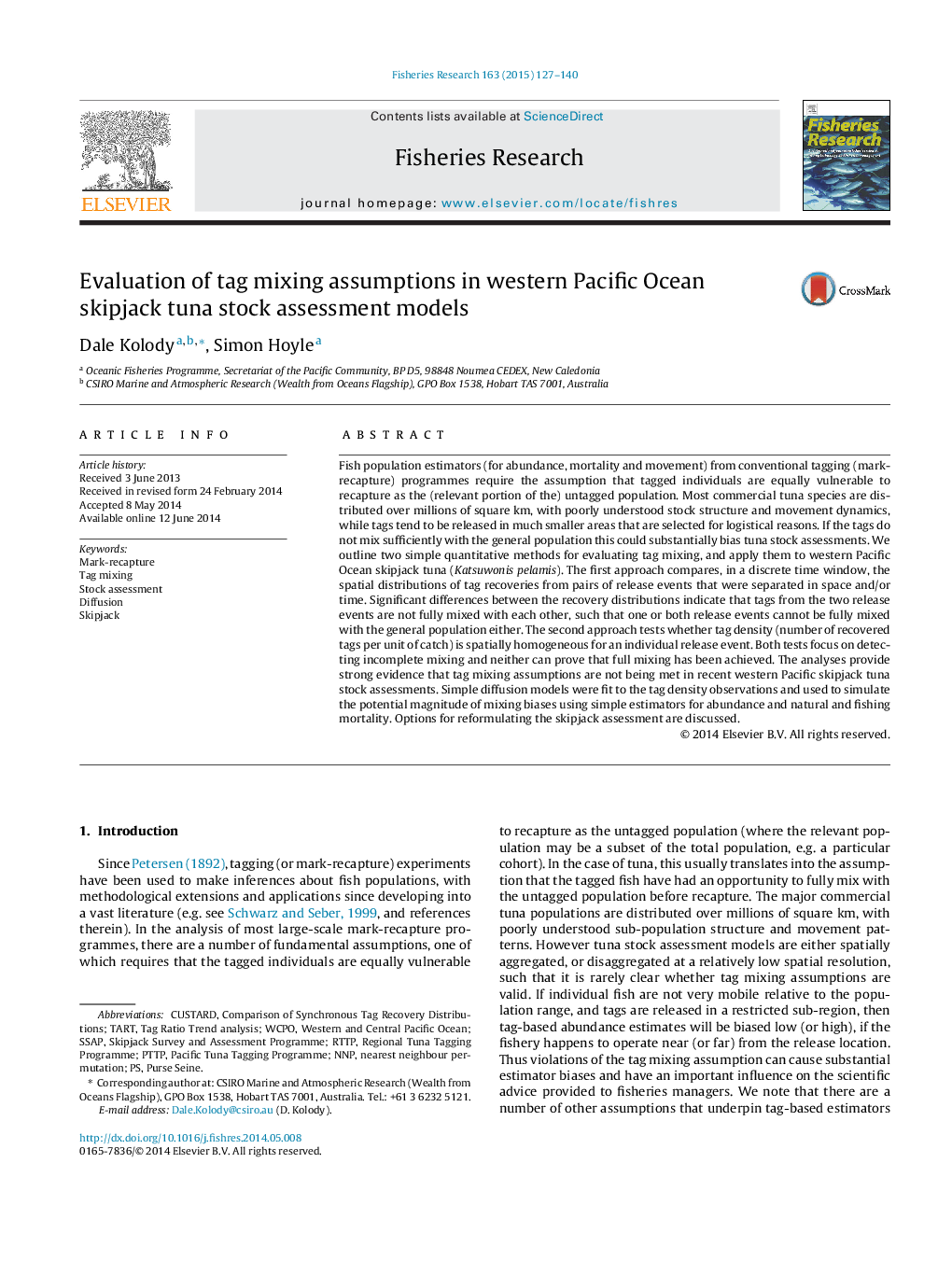| کد مقاله | کد نشریه | سال انتشار | مقاله انگلیسی | نسخه تمام متن |
|---|---|---|---|---|
| 4542935 | 1626805 | 2015 | 14 صفحه PDF | دانلود رایگان |
• Statistical methods to test stock assessment tag mixing assumptions were developed.
• Mixing analyses for Pacific skipjack assessments indicate poor mixing for 1.5+ years.
• Simulations describe tag estimator bias in relation to assessment model structure.
Fish population estimators (for abundance, mortality and movement) from conventional tagging (mark-recapture) programmes require the assumption that tagged individuals are equally vulnerable to recapture as the (relevant portion of the) untagged population. Most commercial tuna species are distributed over millions of square km, with poorly understood stock structure and movement dynamics, while tags tend to be released in much smaller areas that are selected for logistical reasons. If the tags do not mix sufficiently with the general population this could substantially bias tuna stock assessments. We outline two simple quantitative methods for evaluating tag mixing, and apply them to western Pacific Ocean skipjack tuna (Katsuwonis pelamis). The first approach compares, in a discrete time window, the spatial distributions of tag recoveries from pairs of release events that were separated in space and/or time. Significant differences between the recovery distributions indicate that tags from the two release events are not fully mixed with each other, such that one or both release events cannot be fully mixed with the general population either. The second approach tests whether tag density (number of recovered tags per unit of catch) is spatially homogeneous for an individual release event. Both tests focus on detecting incomplete mixing and neither can prove that full mixing has been achieved. The analyses provide strong evidence that tag mixing assumptions are not being met in recent western Pacific skipjack tuna stock assessments. Simple diffusion models were fit to the tag density observations and used to simulate the potential magnitude of mixing biases using simple estimators for abundance and natural and fishing mortality. Options for reformulating the skipjack assessment are discussed.
Journal: Fisheries Research - Volume 163, March 2015, Pages 127–140
